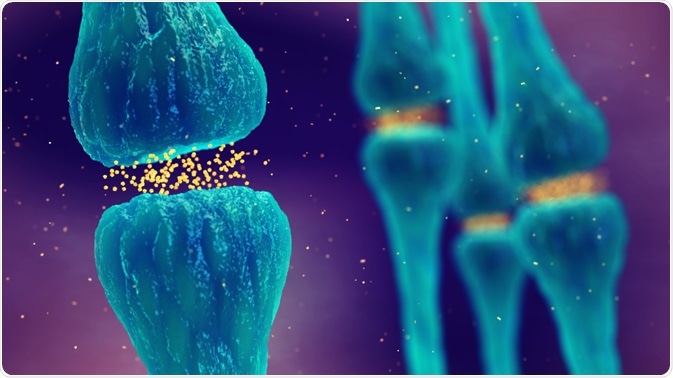Combining electrochemistry with mass spectrometry (EC-MS) provides a powerful method to determine the products and intermediates of electrochemical reactions. Apart from understanding the mechanism of various redox reactions, it can also be used for other applications, including the study of neurotransmission.
 nobeastsofierce | Shutterstock
nobeastsofierce | Shutterstock
What are the advantages of EC-MS?
EC-MS acts as a sensitive detector and provides information about the molecular weight of a sample of interest. In addition, the electrochemical conversion improves the ionization of the analyte before the process of mass spectrometry.
The challenge of coupling the two techniques of electrochemistry and mass spectrometry lies in interfacing the electrochemical cell with a mass spectrometer. For this purpose, an appropriate ionization method should be selected. This method was first introduced in 1971 by Bruckenstein and Gadde, who placed a Teflon membrane between the porous electrode and the ionization chamber of the mass spectrometer. This was done so that the reaction products can penetrate the membrane and get ionized without the solvent interference.
Instrumentation used in EC-MS
In 1995, Van Berkel and Bond coupled electrochemistry and electrospray mass spectrometry. They studied metal–diethyldithiocarbamate complexes using an electrochemical cell with two electrodes.
The two microtubes connected using Teflon tubing were employed as a two-electrode cell, and a direct current was applied across the electrodes to ionize the solution before electrospray ionization. The electrochemical solvents used included acetonitrile and dichloromethane, and electrolytes such as tetrabutylammonium hexafluorophosphate.
Another study used two types of electrochemical cells; thin layer electrode, tubular electrode, and porous electrode cells. In another recent advancement, a study used microfluidic chips along with mass spectrometry.
Understanding electrochemical reactions during neurotransmission
Action potential during neurotransmission is an electrical signal generated in the cell body of the axon. This electrical signal is generated by charged ions that move across the axonal membrane. The concentration of ions determines the opening and closure of ion channels.
EC-MS can also be used to determine the reaction intermediates and reaction mechanisms; in a study, EC-MS was used to study the oxidation of cyclic tertiary allylamines. EC-MS has also been used to study the redox pathways of neurotransmitters and other organic compounds, such as amines, alcohols, thiolates, nitroaromatics, neurotransmitters, etc.
Mimicking metabolic pathways
EC-MS can also be used to mimic metabolic pathways, as many metabolic pathways include redox reactions. This is useful to analyze neurotransmission, as mentioned above, as amino acid metabolism is critical to forming several small signaling molecules, including neurotransmitters and hormones. EC-MS has many benefits as this method is fast and inexpensive and can also provide metabolic information for in vivo studies.
Chemical imaging
Chemical imaging is a useful application of EC-MS that helps to understand the spatial distribution of analyte of interest, such as a neurotransmitter. However, EC-MS imaging is still in its initial stages. Modestov et al. developed the first imaging apparatus based on EC-MS. This method involves placing a sample electrode for imaging horizontally on a micropositioning device, which then functions as a working electrode.
Coaxial capillaries are placed vertically above the sample to introduce solutions to the electrode. This set-up has been used to efficiently image thiol-containing peptides that were tagged with electrochemically oxidized hydroquinone. This method could also be used to image analytes during the process of neurotransmission.
Further Reading
Last Updated: Dec 15, 2022